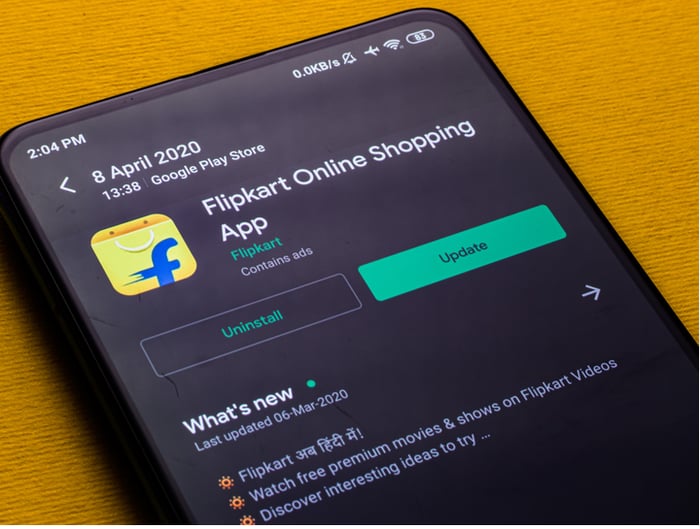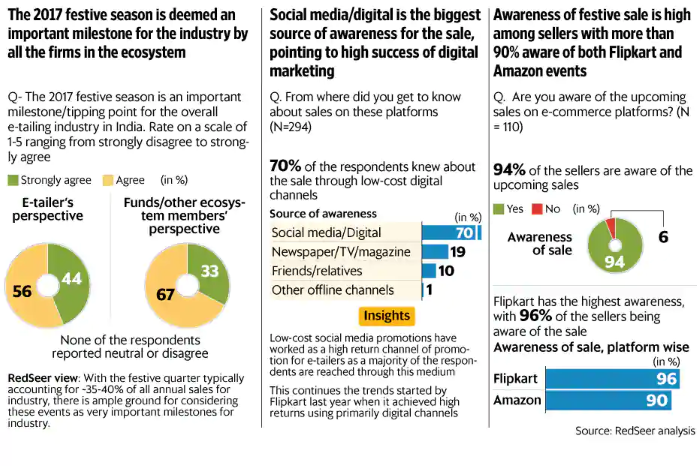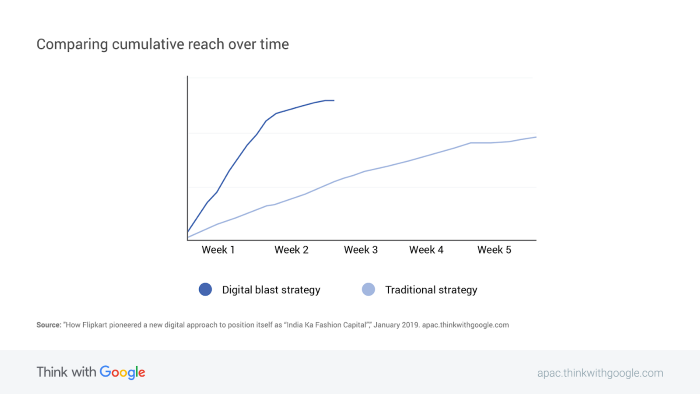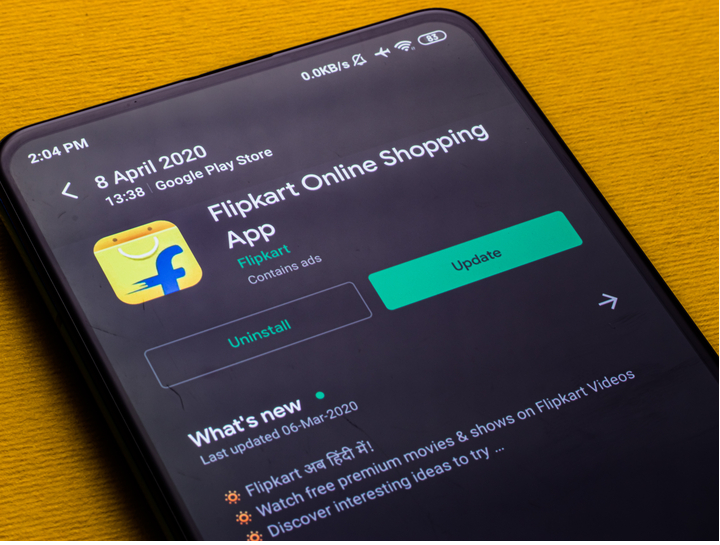Let’s take a closer look at Flipkart’s journey over the years. Flipkart started when both co-founders were working for global e-commerce giant, Amazon, in Bengaluru. Flipkart too, started off with selling only books on their website. After they secured funding and showed significant growth, they moved to other categories.
The Bansals struck gold after their initial funding, with growth figures doubling every quarter, they raised many rounds of funding both from American as well as Indian investors. Their revolutionary “Cash on delivery” functionality paved the way for their growth among skeptical Indian consumers who had just begun to discover online shopping. This helped consumers receive their products before paying for them - as a sort of insurance against India’s many logistical hurdles.
Flipkart became India’s e-commerce giant. This was further strengthened by their deal with Walmart in 2018 when the Bansals sold a 77% stake in their company for a whopping $16 billion, taking the company’s valuation to about $22 billion.

This was not an overnight success story. A lot of hard work was put into it. Today I’ll take a look at the marketing strategy that made this company such a success!
Flipkart’s overall marketing strategy
Let’s talk about Flipkart’s broad marketing strategy. On the face of it, their main principle seems to be focused on being present at every single touch point their customers are present at. Today this means using the majority of their budget on digital channels and marketing. Moreover, since India is a mobile-first country, this is most definitely paying off.
Flipkart also invests heavily in star power and influencer marketing. India loves Bollywood and Flipkart uses this to sell and raise awareness about their products. Ranbir Kapoor, Alia Bhatt, Amitabh Bachchan and Shraddha Kapoor have all been prominently featured in Flipkart TV ads and in their online campaigns. This shows that Flipkart not only has deep pockets, but also has an eye on the pulse of the market.
In recent years, Flipkart has increased its budget spend on digital marketing considerably. Earlier, they were spending crores in multichannel marketing campaigns that resulted in a large amount of cashburn. Since Kalyan Krishnamurthy took over Flipkart in 2017, there has been a large-scale revamp of its marketing strategy - it’s become leaner and heavily based on digital, which has worked out well for them.
A study published in Livemint in 2017 outlines the very beginning of the transformation wherein potential customers showed a greater awareness of Flipkart’s Big Billion Day sale as compared to other retailers.

In addition to marketing campaigns, Flipkart also uses its digital channels extensively to provide customers with the best experience possible with their platform. Customers voice concerns and complaints on Flipkart’s social media channels and this is dealt with quickly and efficiently.
Of course, this investment in digital channels hasn’t stopped Flipkart from working with celebrities and influencers extensively. Flipkart relies heavily on influencer marketing and influencers to spread the word about their campaigns. The best part about this is that the message can be utilized both online and offline - making way for them to use it both for TV spots/billboards, as well as advertising online.
Flipkart’s pivot from electronics to fashion
Flipkart had a very successful run in India till 2015. There were some glitches after this, when Amazon and other e-commerce giants got a taste of Flipkart’s market share, but India’s original e-commerce giant quickly pivoted in response.
Initially, Flipkart was known to be an electronics hub. If you needed a new phone or kitchen appliance, you went on Flipkart.com to check out the latest deals. Today, Flipkart resonates with the Indian audience as a seller of everything from groceries to fashion. This is largely due to their marketing efforts.
Flipkart started a targeted marketing campaign for the fashion segment called “India ka Fashion Capital”, focused on videos featuring celebrities. These videos were used for TV spots as well as YouTube in order to maximize reach. Within just ten days, they were able to garner 100M views on YouTube.
Google was also able to measure the impact of digital vs traditional media strategies, which made it clear that the brand had made a good bet by going all out on digital platforms.

This was one of many campaigns aimed at raising awareness of Flipkart’s fashion and apparel selection which has made a big impact. This, combined with the previous research done on the audience’s awareness of Flipkart’s sales shows that it really does pay to be present at all the touchpoints - especially on digital.
Flipkart today - COVID strategy
The COVID crisis in India this year has resulted in many brands stepping up in the country’s hour of need. Flipkart, being a giant was no exception to this, despite being heavily restricted by law to keep their business from running during this time.
For frontline workers and consumers
Together with parent company Walmart, Flipkart announced that it would donate INR 46 Cr worth of medical supplies to support the fight against coronavirus in India. This includes the donation of protective equipment such as N95 masks and medical gowns, and equipment to NGOs and those working in the frontlines. Additionally, Walmart is donating 7.7 Cr to NGOs - Goonj and Srijan in India, which will be used to collect food, medicines and other equipment for distribution.
Additionally, Flipkart also partnered with Tata Consumer Products so as to ensure a greater supply of essential food and grocery items for their customers.
Flipkart #SmartBuy also launched hand sanitizers and surgical masks in April, to fight the shortage. Not only that, Flipkart also joined forces with Uber and Meru Cabs in India, to deliver essential items to consumers in Delhi, Bengaluru and Mumbai.
#News: @Flipkart #SmartBuy launches hand sanitizers & surgical masks to support the country’s efforts to control #COVID19 outbreak. Medically certified products, priced as per government directives, will be available under the brand's Health+ range
More: https://t.co/zV6nF2wue8 pic.twitter.com/q7o092MjaS— Flipkart Stories (@FlipkartStories) April 9, 2020
For their delivery network and partners
Flipkart has stepped up the medical cover they provide for those working in their supply chain network - including local stores, as well as individuals. Their insurance provides protection against lost income during the COVID crisis as well as medical insurance for outpatient care, consultation and pharmacy requirements.
Flipkart made sure to take care of the ecosystem that drives their main business. This, of course, is something that will help them win big in the long run, and bounce back once the economy recovers from the crisis.
Flipkart best campaigns
Flipkart Kidults
No discussion about Flipkart is complete without mentioning their Kidults campaign launched in 2014. Aimed at spreading the word about Flipkart fashion, this campaign places stylishly clad kids in everyday situations that adults encounter - of course a lot of the creatives feature influencers in order to add starpower. This campaign was a hit and has been used extensively till as recently as 2019.
Flipkart worked with Loewe Lintas on this campaign and it’s clearly had a successful run. The idea of having kids act like adults is quite refreshing, and has an entertainment factor which keeps people hooked and coming back for more of these ad creatives. Of course, roping in star couples like Ranbir and Alia brings its fair share of advantages.
Flipkart's GenE
In December 2018, Flipkart launched an ad campaign to address gender inequality issues which has often plagued India.
The concept is pretty clever - Flipkart launched a new digital campaign featuring GenE - Gender Equal which features a new generation of children engaged in atypical activities associated with their gender. The idea was to raise kids without any rigid gender norms and allow them to realize their full potential. Flipkart, in tune with this campaign, also launched a Gen E store on their website - a unisex kids clothing line.
This campaign stands out for me particularly because it’s about raising a future generation that aims to have a lower disparity between sexes. It’s also about conscious parenting which is definitely the need of the hour.
Big Billion Day
Flipkart has gone all out with its Big Billion Day campaign in recent years. It’s a sort of festive Black Friday for India. Last year, they even managed to rope in the evergreen Amitabh Bachchan for the launch of their Big Billion Day sales.
The idea is to show India in the various stages of preparation for the Big Billion Day - celebrities play iconic characters - e/g., Amitabh Bachchan plays “Don” - and all of these characters are as excited about the offers and deals from the Big Billion Day sales as the everyday people these ads are targeted at.
It’s interesting to see how Flipkart is different from Amazon in its approach to festive marketing - since both these two e-commerce giants have huge sales during this period. While Amazon bets on deals, Flipkart is looking at star power in order to bring in a greater audience to their website. Of course, the ultimate winner here is the consumer, since they can avail of the exciting offers that both shopping websites bring their way.
India’s next fashion influencer
Myntra (owned by Flipkart) took fashion to television last year when they partnered with Zoom to launch their TV show : India’s next fashion influencer. The idea was to have a reality TV show aimed at finding India’s next big fashion guru and to reward their fashion genius. Bollywood star Sonakshi Sinha judged the show and mentored contestants. Contestants were asked to put their best looks together and share it on social channels.
The main aim was to enrich both the influencer community as well as bring visibility to Myntra and e-commerce as a whole. The winner was Tanumita Ghosh. Of course this was Myntra’s masterstroke, and enabled them to effortlessly bring both the online and offline worlds together.
Flipkart’s VR Campaign
VR is definitely the future and is set to change life as we know it. But Flipkart - always experimentative - is an early adopter of technology. They used VR to gamify their Big Billion Day Sale campaign last year, and match their offers and deals with the full moon since it is auspicious and closely related to the festive calendar in India. Their ad campaign ran on days when there was no full moon, but, with the help of VR, users were able to see a full moon but obscured by clouds. Gamification prompted the users to blow into the microphone to move the clouds away revealing both the full moon and an exciting new offer. This campaign went super well, garnering 5 million views and a CTR of 2% which is 10x the industry average.
Conclusion
Flipkart’s marketing strategy is a very solid and robust one - of course it also doesn't hurt that brands like Flipkart have deep pockets and can make their marketing efforts come to life. The best thing about Flipkart is that they’re great with transmitting coherent messages across platforms. As a marketer here are my main takeaways from Flipkart:
-
Influencer marketing and star power are huge in India - Flipkart understands this and is not shy about using this channel in order to garner traffic and views.
-
Flipkart is also largely focused on visual ads - be it video, creatives or even reality tv. As a fashion brand this is great and shows that they understand their product as well as their audience.
-
Multichannel ads are great. While Flipkart drives the performance of their ads online with performance marketing, they’re also heavy on offline ads and TV spots which shows a great understanding of the audience.
-
Experimenting is always great and Flipkart is not shy about this - being one of the early adopters of gamification and VR.
-
Customer really is king. Their offers are always really great and their hugely successful Big Billion Day is testament to this fact. If customers - still largely traditional when it comes to buying clothing online - are happy to stop going to stores and order online and in some cases even pay in advance, you know Flipkart is doing something right.




